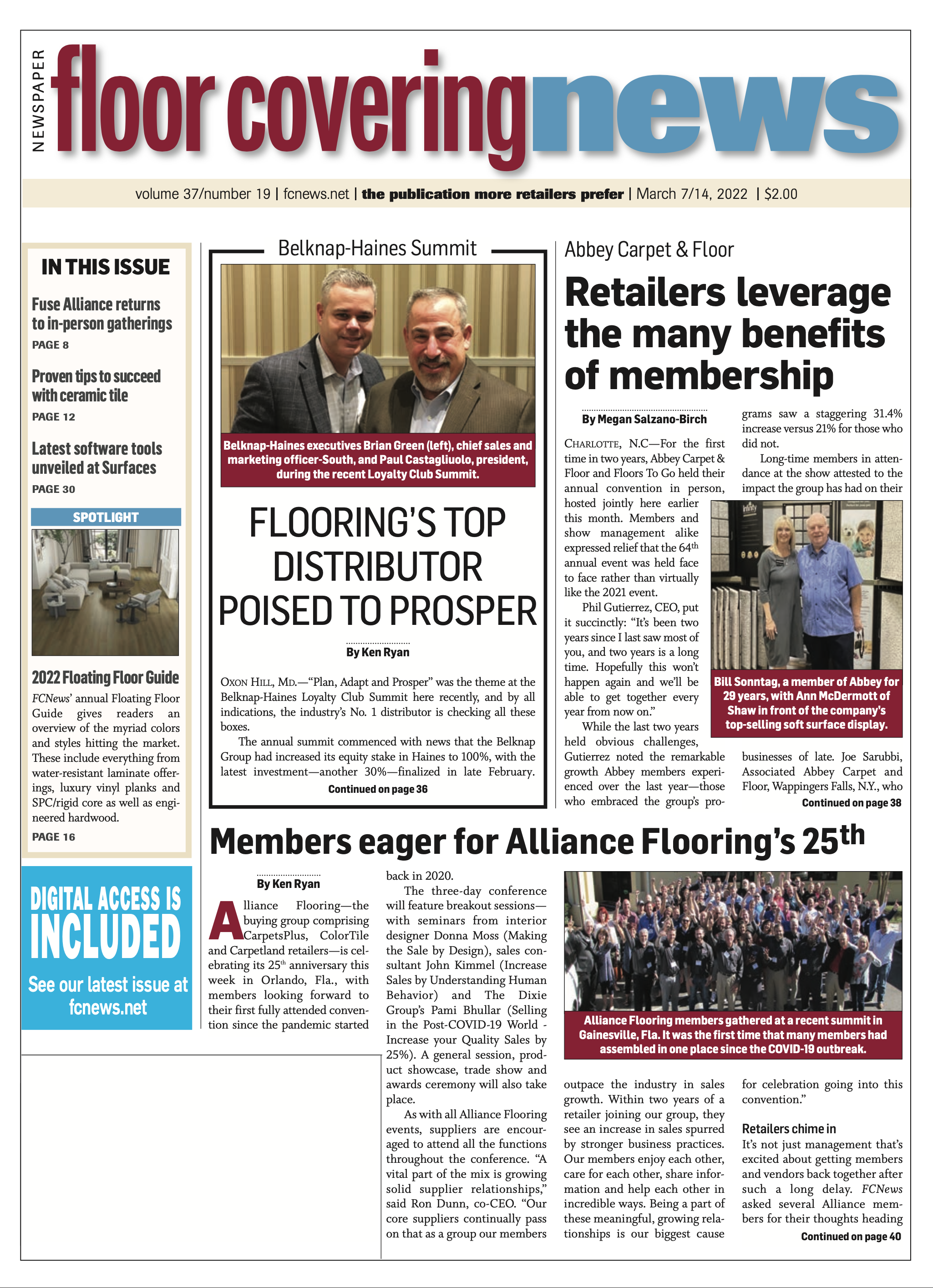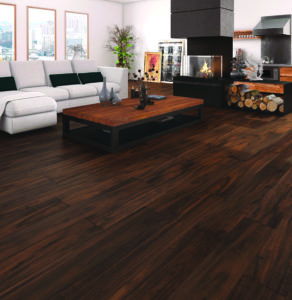
By Reginald Tucker—The laminate flooring category has long been a go-to product segment for consumers seeking a durable, high-performing, visually appealing and value-based flooring alternative. Proponents of the segment cite its proven track record not only in North America but in both residential and light-commercial installations around the world, especially Europe.
But while those attributes have helped the category maintain consistent sales volume of $1 billion-plus in the U.S. market over the past five to seven years, stiff competition from nascent hard surface categories—namely LVP, WPC, SPC and even some entry-level engineered hardwood—has kept laminate growth rates in check. That dynamic is gradually shifting, however, as supply chain challenges surrounding imported LVP/SPC and rigid core products are forcing specialty retailers and distributors to fill the void with domestically produced laminate flooring.
“Laminate is making a resurgence for sure,” said Brian Parker, vice president of product management, AHF Products, which recently added TimberTru laminate to its growing hard surface portfolio. “When you look at the industry in 2020, NALFA reported double-digit growth in the vicinity of 14% to 16%. When you talk to our distributor partners, they saw significantly higher growth than that. So, yes, laminate is coming back in a big way.”
Other major laminate providers agree. “From Mannington’s point of view, laminate never left,” said David Sheehan, vice president, residential hard surface. “That said, however, over the past year or so we have seen a renewed interest in the category.”
Parker and Sheehan, like many industry observers, tie the category’s newfound resurgence mostly to the need for more products made right here in the USA as ongoing supply chain logjams choke off many imported goods. “Consumers are looking for domestically manufactured product given all the issues of trying to input product from Asia due to tariffs, duties, shortage of containers, ships, port congestion and the crazy freight rates,” Parker stated. “All of that makes SPC or any product you’re trying to import very pricey and difficult to get. Right now, with all the demand in the market, whoever has products wins. Having a domestically manufactured laminate product puts us in that position.”
Companies that are making laminate domestically continue to invest significantly in their operations to raise the bar on performance and aesthetics. “Improvements in the form of moisture-resistant technologies, such as our SpillShield Plus Waterproof Technology, has restored consumer and retailer confidence in the long-term performance of the product in the home,” Mannington’s Sheehan said. “We are also now using digital print technology, such as our TruDetail Digital styling, to create more realistic looking products.”
Mohawk, another domestic supplier, is also investing heavily in technology and additional capacity. This is primarily to support surging sales of both its RevWood- and Pergo-branded product lines. Late last year, the company completed a 275,000-square-foot expansion of its Thomasville, N.C., plant—a 1.6-million-square-foot facility—in anticipation of higher demand for laminate flooring in the U.S. The Triad Business Journal reported that Mohawk invested more than $80 million in the plant.
“While other manufacturers are trying to decide whether to get in or out, Mohawk continues to innovate and expand the category every day,” said Seth Arnold, vice president, residential marketing, Mohawk.
Innovations galore
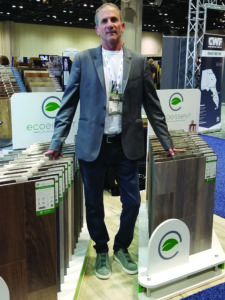
Examples of that innovation was on display recently at Mohawk’s booth at Surfaces. Here, the company put the spotlight on RevWood Premier, which features Mohawk’s Signature Imprint technology, and enhancements to Pergo. “With our new technology, Signature, it’s really about making the most accurate representation of real engineered hardwood,” said David Moore, senior director of product management, wood and laminate. According to Moore, the improved realism is achieved through three development phases: captured design, texture and finish. The first stage begins with sourcing a real wood visual and then scanning that sample to glean as much information as possible out of the source wood.
The next step entails the application of texturing in the wear layer to match the characteristics of the wood pattern and graining in the underlying image. The last component is the application of its Clarity finish, which produces a higher resolution across a broader spectrum of colors, Moore said.
With respect to Pergo—the laminate brand that started it all more than 20 years ago—it’s about differentiation and making the product more readily available to more channels. “With Pergo, the story is all about giving our retailers the opportunity to say ‘yes,’” Moore stated. “Oftentimes consumers go online to do their shopping, they get to the big box stores and they see the Pergo brand and then they call the specialty retailer to see if they have the brand and they say ‘no.’ What we’re doing with Pergo is giving them the ability to advertise and get people into the store.”
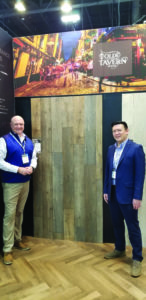
Across the board, hard surface suppliers are putting more research and development into the category. At the Inhaus booth at Surfaces, the spotlight was on Lamdura, the company’s latest laminate innovation touting direct digital printing and high-tech embossing for added texture. Officially launched in 2021, Surfaces 2022 was the first opportunity dealers and distributor had to see the product firsthand. “The reaction to Lamdura has been very good,” said Derek Welbourn, the CEO of Inhaus, who has long been a proponent of the category. “A lot more people are interested in laminate than they used to be.”
Inhaus said it is looking to maintain that high level of interest by giving retailers more flexibility and a greater number of options. For example, Inhaus’ opening laminate product is 7mm (plus 2mm pad), followed by an 8mm (plus 2mm attached pad.) To differentiate its designs from the “off-the-shelf” laminate offerings currently available on the market, Inhaus sources and scans real wood patterns that form the foundation for its laminate visuals. “We make all of our own plates, and it’s all embossed in registration,” Welbourn explained.
Another eye-catching laminate collection actually comes from a company that originally specialized in hardwood flooring before it expanded its offering to include rigid core products. Johnson Hardwood at Surfaces unveiled a high-performance laminate offering based on some of its most popular hardwood visuals. “The feedback has been phenomenal,” said Billy Ko, president. “The visuals are spectacular, it provides up to 72 hours of protection against water and it has an AC4 rating on it for wear. It’s a high-quality, high-performance floor.”
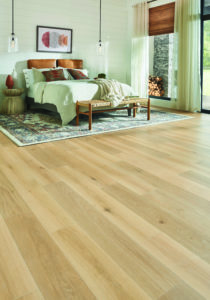
Other noteworthy collections hitting the scene include the Incore Eco-Engineered Composite from Eternity. Incore comes in hefty, 12.3mm-thick planks in random lengths up to 6 feet and boasts improved scratch resistance. “Not only does Ecoessent offer GreenGuard Gold Certified products, the entire Ecoessent line up is FloorScore Certified—which means Ecoessent has passed strict and rigorous testing assuring that all Ecoessent products are Indoor Air Safe Certified to install in every home,” said Isaac Lee, head of corporate marketing and product development. “Ecoessent has invested in exclusivity for its Authorized Retailers to confidently sell at maximum profit margins.”
In addition, Eternity offers 12 SKUs of U.S.-made laminate flooring in addition to 12 SKUs of Austrian-made waterproof laminate flooring called AquaFi

